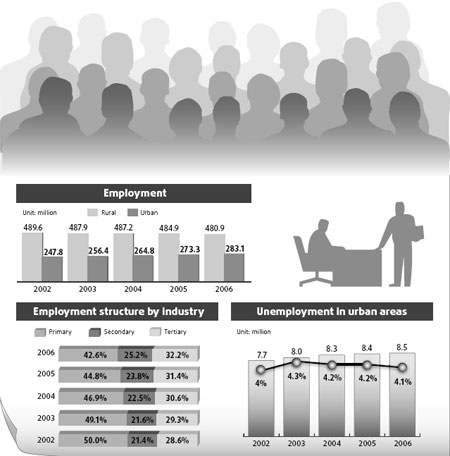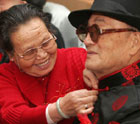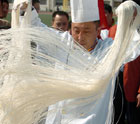China has seen its job market grow over the past five years, despite pressures posed by the world's largest population, the National Bureau of Statistics (NBS) said in a report about employment yesterday.
The number of employed workers reached 764 million in 2006, compared to 737.4 million in 2002. That represents an average increase of more than 6.6 million per year.
The statistics show that employment increased in urban areas, while it decreased in rural areas due to the urbanization process. The number of people employed in urban areas increased from 248 million in 2002 to 283 million in 2006, increasing by nearly 9 million people per year. The employment numbers in rural areas, however, decreased from 489 million in 2002 to 481 million in 2006, down more than 2 million people per year.

As the urbanization process continues in China, the total number of employed urbanites has increased proportionally. Urban workers made up 37 percent of the nation's total workforce in 2006, compared to 33.6 percent in 2002.
As more jobs have become available in cities, more people have emigrated from rural areas, and rural populations and employment numbers had decreased accordingly. Rural employment rates dropped to 62.9 percent in 2006, down from 66.4 percent in 2002, according to the NBS report.
The job market has also felt the effects of an increased number of laid-off State employees in the period between 2003 and 2006. Added to this, workers from rural areas seeking employment have flooded into non-agricultural sectors in the cities, causing new pressure on the employment situation in urban areas.
But government policies seem to be easing employment problems, as more and more people are employed every year. In 2006 alone, there were 10 million newly employed workers. And between 2002 and 2006, some 20 million laid-off workers from State-owned enterprises found new jobs, according to the report.
Shrinking agriculture
There is also a change in the country's employment structure. The number of workers in primary industries, namely the agricultural sector, is decreasing. But the growing number of workers in the service and manufacturing industries seems to offset that decrease.
In 2006, more than 325 million people worked in the agricultural sector, 43 million and 11.7 percent less than in 2002. At the same time, employment numbers in secondary industries like manufacturing and construction, reached 192 million, 34 million and 21.8 percent more than in 2002, with an annual increase of 8 million.
Agriculture, which made up more than half of the overall employed population in 2002, made up only 42.6 percent in 2006.
The government has also been supportive in the development of labor-intensive industries, which have created many jobs. Workers employed in the manufacturing industry, the fastest-growing sector, increased by 22.7 million people between 2002 and 2005, with an average annual increase of 7.5 million. During the same period, industries such as wholesale and retail and food and beverage, experienced a large increase in total employment.
The NBS report showed a decrease in the number of workers employed by State-owned and collective enterprises. By the end of 2006, the State employed 74 million workers, down more than 10 million compared to 2002.

The report showed an increase in the number of workers employed by other types of enterprises like share-holding companies and foreign-invested enterprises. From 2002 to 2006, non-public sectors employed more than 43 million workers, with an annual increase of 11 million.
The government has also taken many measures to control China's unemployment rate. The registered unemployment rate in urban areas was kept between 4 percent and 4.3 percent from 2002 to 2006.
Despite all the progress, the NBS report said, many challenges lie ahead. These include finding employment for fresh graduates and for the many workers retrenched by State-owned and collective enterprises.
China Daily
(China Daily 09/21/2007 page14)













